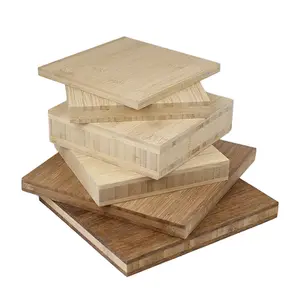

1250*2500*21mm 18mm 15mm Plastic Plywood Sheets For Constructions Phenolic WBP Glue 0.5mm PP Film 2 Sides Use For More Than 30


Wholesale Exterior Weather Resistant Furniture Cutting Panels 4x8 Laminated Mul-layers Bamboo Plywood






















Plastic plywood is a versatile building material engineered for durability and flexibility. This innovative product offers a blend of strength and resilience, making it a preferred choice for various construction and design applications. Wholesale buyers are drawn to plastic plywood for its longevity, cost-effectiveness, and adaptability to diverse projects. Plastic plywood provides wholesale buyers with a durable and sustainable alternative to traditional plywood. The advantages include resistance to moisture, termites, and rot, ensuring a longer lifespan. Plastic plywood offers stability in various environmental conditions, making it an ideal choice for construction, furniture making, and other applications where longevity and reliability are crucial.
Plastic plywood is made from a combination of high-density polyethylene (HDPE) and a reinforcing material such as fiberglass. HDPE contributes to the material's resistance to water and chemicals, while the reinforcing material enhances strength and stability. PVC plywood, also known as plastic plywood, is typically made from a combination of PVC (polyvinyl chloride) and wood fibers or wood powder. The specific composition may vary among manufacturers, but the general process involves binding PVC with wood particles to create a composite material that exhibits characteristics of both plastic and wood. The materials were chosen for their durability and ability to withstand the challenges posed by outdoor and industrial applications. Common uses of plastic plywood encompass a wide range of construction projects, from outdoor furniture and marine applications to signage and transportation. Its resistance to water makes it ideal for outdoor structures, while its strength and flexibility ensure versatility across diverse industries. Plastic plywood is a reliable choice for any application where traditional plywood may be susceptible to environmental factors.
There is a diverse option of plastic plywood to cater to various wholesale needs. Plastic plywood sheets offer a standard and versatile option for various construction projects, from flooring to wall panels. FRP plywood incorporates fiberglass reinforcement, providing enhanced strength and rigidity, making it suitable for applications where structural integrity is paramount. Synthetic plywood sheets combine the durability of plastic with the aesthetic appeal of wood grain patterns, ideal for furniture and decorative applications.
Installing plastic-covered plywood follows similar processes to traditional plywood. It can be cut, shaped, and fastened using standard woodworking tools. Secure the plastic plywood with appropriate fasteners, ensuring proper spacing to accommodate any expansion or contraction. For outdoor applications, sealing edges with a suitable sealant helps prevent water infiltration. Maintaining plastic plywood is pretty simple. Regular cleaning with a mild detergent and water keeps the surface free from dirt and grime. For outdoor applications, periodic inspection and resealing of edges are recommended to ensure ongoing protection against the elements. Plastic plywood's resistance to rot and insects minimizes maintenance efforts, providing wholesale buyers with a durable and low-maintenance solution for their construction needs.